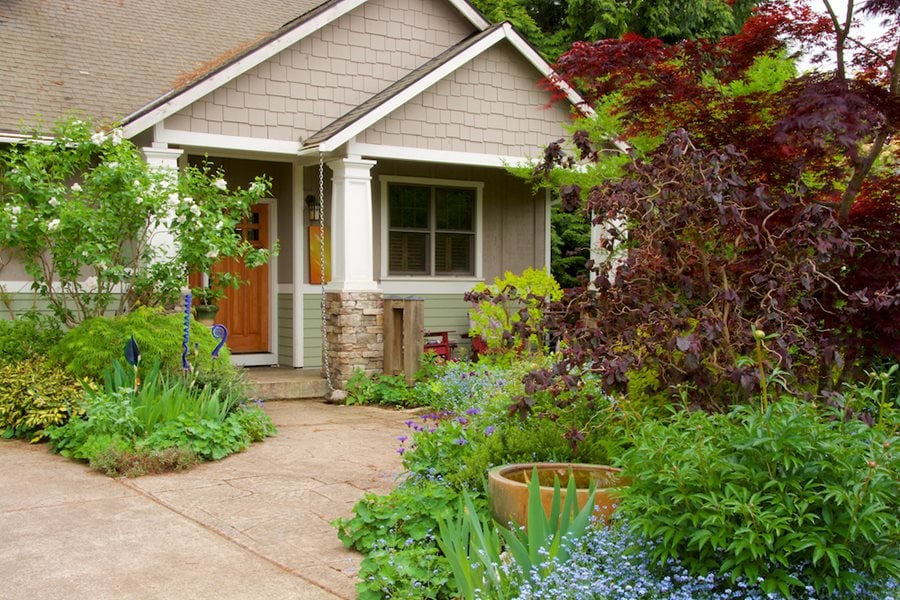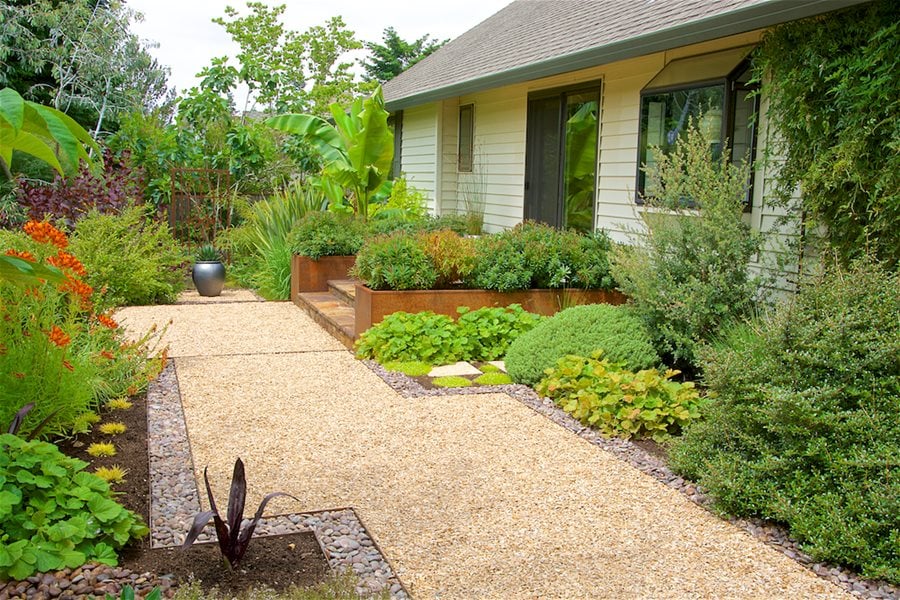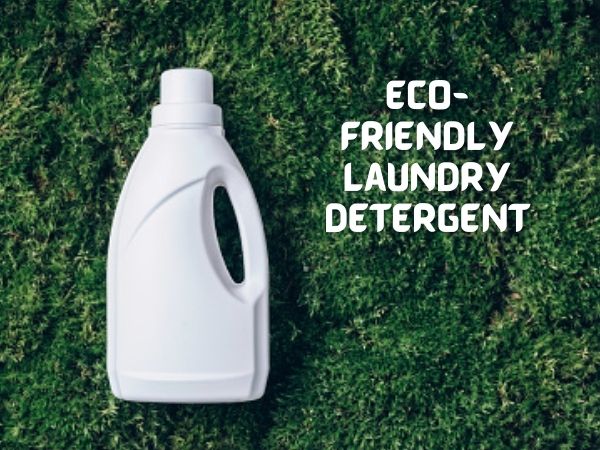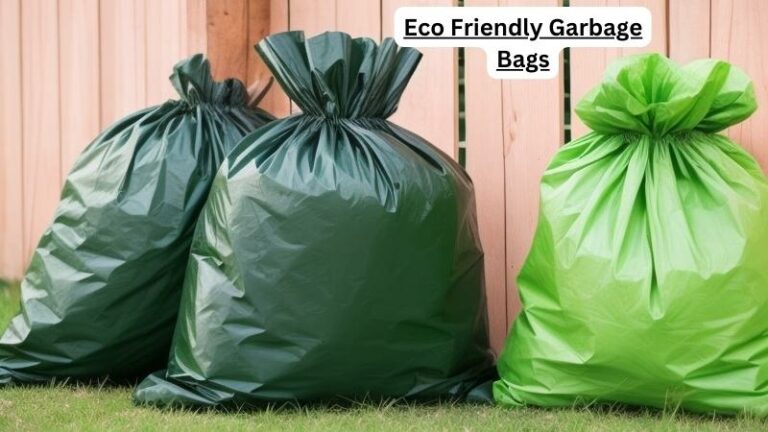Eco Friendly Lawn Alternatives
Now, you might be wondering, “What are these eco-friendly lawn alternatives?” Good question! Instead of traditional grass lawns, you have a variety of options such as native plants, ground covers, and even artificial turf.
But why should you consider these alternatives? Here’s the deal: Eco-friendly lawn alternatives require less water, pesticides, and fertilizer, reducing their impact on the environment. Plus, they often require less maintenance, giving you more time to enjoy your outdoor space. Intriguing, isn’t it?
So, let’s dive into the world of eco-friendly lawn alternatives and discover how you can transform your yard into a sustainable, low-maintenance haven.
 Source: gardendesign.com
Source: gardendesign.com
Eco-Friendly Lawn Alternatives: A Green Solution for Your Yard
Are you looking for a sustainable and eco-friendly alternative to traditional lawns? Look no further! In this in-depth guide, we will explore the various options available to help you create a beautiful and environmentally friendly yard.
From low-maintenance ground covers to native plants and artificial turf, there are plenty of alternatives to consider. So, let’s dive in and discover the perfect eco-friendly lawn alternative for your home!
The Benefits of Eco-Friendly Lawn Alternatives:
Before we explore the different alternatives, let’s take a moment to understand why eco-friendly lawn alternatives are becoming increasingly popular. Traditional lawns require a significant amount of water, fertilizers, and pesticides to maintain their lush appearance.
However, these practices contribute to water pollution, harm local wildlife, and increase greenhouse gas emissions. By choosing eco-friendly alternatives, we can reduce our impact on the environment and create a more sustainable and beautiful yard.
1. Low-Maintenance Ground Covers:
One popular eco-friendly lawn alternative is to replace your grass with low-maintenance ground covers. These plants require minimal watering, mowing, and fertilizing, making them an excellent choice for busy homeowners or those looking to reduce their lawn’s upkeep.
Ground covers like clover, thyme, and creeping Jenny not only provide a lush and green carpet, but they also attract pollinators and require less water than traditional lawns. Additionally, they are more resistant to pests and diseases, reducing the need for harmful chemicals.
When choosing a ground cover, consider the specific conditions of your yard, such as sunlight exposure and soil type. Some ground covers thrive in shady areas, while others prefer full sun. Take the time to research and select the best ground cover for your specific needs. Once established, these low-maintenance alternatives will transform your yard and provide a beautiful and sustainable landscape.
Here are some key benefits of low-maintenance ground covers:
- Reduced water consumption
- Minimal maintenance and mowing
- Attracts pollinators and beneficial insects
- Increased resistance to pests and diseases
- Improved soil health and erosion control
2. Native Plants for a Biodiverse Landscape:
If you’re looking to support local wildlife and create a biodiverse landscape, consider replacing your lawn with native plants. Native plants are adapted to your region’s climate, making them more resilient and low-maintenance. They provide habitat and food sources for birds, bees, butterflies, and other pollinators, creating a thriving ecosystem in your yard.
When selecting native plants, choose a variety of species that bloom at different times of the year to provide food and shelter throughout the seasons. Native grasses, wildflowers, and shrubs are excellent choices for a diverse and vibrant yard. Additionally, native plants often require minimal irrigation once established, reducing water consumption and lowering your water bills.
Here is why native plants are a great eco-friendly lawn alternative:
- Sustainable habitat for local wildlife
- Requires less water and maintenance
- Promotes biodiversity and ecosystem health
- Beautiful blooms and colors throughout the year
- Reduces the use of fertilizers and pesticides
3. Artificial Turf: The Low-Maintenance Solution
If you prefer the look of a traditional lawn but want to minimize maintenance and environmental impact, artificial turf is a popular choice. Made from synthetic materials, artificial turf provides a lush and green appearance all year round without the need for mowing, watering, or fertilizing. It is an ideal option for areas with poor soil or limited sunlight.
While artificial turf does not provide the same benefits as natural grass, such as carbon sequestration or cooling effect, it offers several advantages that make it an eco-friendly alternative:
- No need for water, pesticides, or fertilizers
- No mowing or maintenance required
- Durable and long-lasting
- Resistant to pests and diseases
- Provides a safe and clean surface for outdoor activities
Keep in mind that artificial turf can have a higher upfront cost and may need periodic cleaning to prevent debris buildup. However, if you value a low-maintenance lawn and have specific requirements for your yard, artificial turf can be a viable and sustainable option.
Lawn Alternatives for Different Yard Styles
Every yard is unique, and the perfect eco-friendly lawn alternative for one homeowner may not be suitable for another. Let’s explore three different yard styles and the best alternatives for each:
A Zen Garden for Relaxation:
If you’re looking to create a tranquil and peaceful space in your yard, a Zen garden is an excellent choice. This style focuses on simplicity and minimalism, often featuring carefully arranged rocks, sand, and a few key elements. In this case, a low-maintenance ground cover like moss or ornamental grasses can complement the Zen aesthetic perfectly. These options require little care and provide a soothing green carpet that enhances the garden’s serenity.
Consider incorporating natural elements such as bamboo or stone pathways to create a harmonious and balanced landscape. The use of native plants, such as Japanese maples or bamboo, can add texture and interest to the overall design. With an eco-friendly lawn alternative in place, your Zen garden will be a haven of peace and serenity.
A Wildflower Meadow for Wildlife:
If you have a larger yard and want to attract bees, butterflies, and other wildlife, consider transforming a portion of your lawn into a wildflower meadow. Meadows are a fantastic way to support pollinators and create a colorful and vibrant landscape. Choose a mix of native wildflowers and grasses that thrive in your region. Native species like black-eyed Susan, purple coneflower, and milkweed are excellent choices for attracting pollinators and providing a stunning display of flowers.
Before converting your lawn into a meadow, prepare the soil properly by removing grass and weeds. Consider adding a layer of compost or organic matter to improve fertility. When planting the wildflowers, scatter the seeds evenly and ensure good seed-to-soil contact. Over time, the meadow will establish itself and require minimal maintenance, providing a haven for wildlife right in your backyard.
A Family-Friendly Play Area:
If you have children or enjoy outdoor activities, creating a family-friendly play area is essential. Instead of a traditional lawn that requires constant maintenance, opt for artificial turf or a combination of low-maintenance ground covers. This will provide a safe and durable surface for play and reduce the time spent on upkeep.
Add fun elements like a swing set, climbing wall, or a sandpit to encourage outdoor play and creativity. Incorporate colorful native plants or shrubs around the play area to create a visually appealing space. Using recycled rubber mulch as a ground cover around play structures can add an extra layer of safety and make the area even more child-friendly. With the right combination of eco-friendly alternatives and imaginative play equipment, you can create a backyard oasis for the whole family.
Conclusion:
Creating an eco-friendly lawn doesn’t have to mean sacrificing the beauty and functionality of your yard. By exploring different alternatives like low-maintenance ground covers, native plants, and artificial turf, you can design a sustainable and vibrant landscape that suits your lifestyle and preferences. Consider the specific needs of your yard, whether it be a Zen garden, a wildflower meadow, or a family-friendly play area, and choose the perfect eco-friendly lawn alternative accordingly. Embrace the green revolution and create a yard that is not only beautiful but also beneficial to the environment and local wildlife.
Eco-Friendly Lawn Alternatives: Key Takeaways
- Consider planting a wildflower meadow to add color and attract pollinators.
- Try using ornamental grasses and native plants to create a low-maintenance lawn.
- Install a permeable paver system for a sustainable and eco-friendly outdoor space.
- Explore the option of artificial turf, which requires no water or chemicals.
- Mulch your lawn with organic materials like wood chips or compost for better soil health.
Faqs for Eco Friendly Lawn Alternatives:
To maintain an eco-friendly lawn without pesticides, there are a few strategies you can employ. Firstly, consider practicing proper lawn care techniques, such as mowing at the correct height and watering deeply but infrequently.
This promotes a healthy lawn that is more resilient to pests and diseases. Additionally, regularly inspect your lawn for signs of pests and, if necessary, manually remove them from the affected areas.
Another strategy is incorporating natural pest deterrents, such as planting companion plants that repel pests or using organic pest control solutions like neem oil.
By adopting these practices, you can reduce your reliance on chemicals while still maintaining a healthy and vibrant lawn.
There are several alternatives to traditional grass lawns that are both eco-friendly and visually appealing. One option is replacing the grass with groundcovers such as clover or thyme. These low-growing plants require less water and maintenance compared to grass. Another alternative is installing a native wildflower meadow, which not only adds beauty to your landscape but also provides essential habitats for pollinators like bees and butterflies.
If you’re looking for a more low-maintenance option, consider using hardscape elements like gravel or decorative stones. These can be arranged in various patterns to create an attractive, eco-friendly outdoor space.
Reducing water usage in your lawn doesn’t mean sacrificing its beauty. One way to achieve this is by using drought-tolerant plants that require less water to thrive. These plants, such as succulents or native grasses, come in various colors and textures, adding visual interest to your landscape.
Mulching is another effective technique to reduce water evaporation and maintain soil moisture. Apply a layer of organic mulch around plants and in bare areas to help retain moisture and suppress weed growth. Lastly, watering your lawn deeply but infrequently promotes deep root growth, making your lawn more resilient to drought conditions.
Artificial turf, as a lawn alternative, has gained popularity due to its numerous benefits.
Firstly, it requires little to no watering, saving significant amounts of water compared to natural grass lawns. Unlike natural grass, artificial turf does not need to be mowed, reducing noise pollution and eliminating the need for gas-powered lawnmowers.
Artificial turf also offers year-round greenery, regardless of weather conditions, making it an attractive option for those looking to maintain a visually appealing lawn throughout the year. It is durable and can withstand high foot traffic without developing bare patches.
Lastly, installing artificial turf can reduce the time and effort required for lawn maintenance, allowing you to spend more leisure time enjoying your outdoor space.
Incorporating sustainable practices into your lawn care routine is easier than you might think. First, consider leaving grass clippings on your lawn after mowing. This acts as a natural fertilizer, returning valuable nutrients back into the soil. Use organic fertilizers instead of synthetic ones, as they are better for the environment and support soil health.
Moreover, embrace composting. By composting yard waste, kitchen scraps, and leaves, you can create nutrient-rich compost that can be used to enrich your lawn and garden.
Lastly, minimize your use of water and opt for rainwater harvesting. Collect rainwater in barrels or install a rain garden to capture and utilize nature’s gift for irrigation purposes. These simple steps can make a big difference in reducing your ecological footprint and promoting a more sustainable lawn care routine.

Source: gardendesign.com
Why Lawns Suck (And A Few Alternatives That Don’t)
Summary:
So, to sum up, there are many eco-friendly alternatives to traditional lawns. If you want to help the environment and save time and money, consider these options. You can try xeriscaping, which uses native plants that require less water. Another option is replacing your lawn with artificial turf or ornamental grasses, which need less maintenance. Also, you can create a garden filled with flowers, fruits, or vegetables. These alternatives can be beautiful and sustainable, making your yard a more eco-friendly space.



